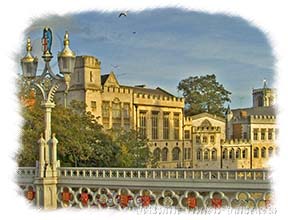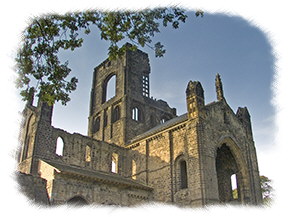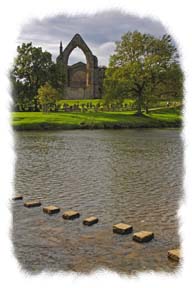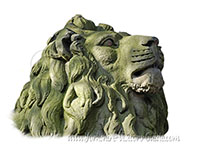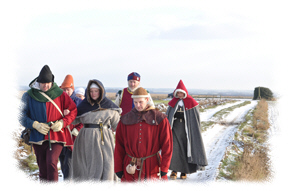Yorkshire History
A Journey Through Time
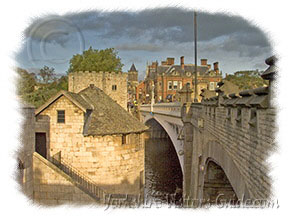
Yorkshire history is long, turbulent and fascinating. The Romans, Vikings and Victorians all played their part in forging this area into the Yorkshire we know today. The Industrial Revolution changed the landscape forever. The gem that is the World Heritage Site of Saltaire was built by Sir Titus Salt to house the workforce that toiled in his new textile mill. If you are intrigued, as I am, by the industry and daring do of our forebears then you’re sure to love Yorkshire. In these pages I hope to tempt you with a flavour of Yorkshire history.
On your travels throughout Yorkshire you’ll find many opportunities to learn about our history. You’ll come across interesting and well presented museums. When you think of museums, does your mind switch off because of memories of boring visits to dry, unimaginative displays in cold, dank-smelling buildings?
Here in Yorkshire we are blessed with museums that encourage interaction, designed by historians with flair and imagination. Yorkshire history isn’t just about the Kings and Queens, aristocracy and national events. What brings our history to life is fascinating stories of ordinary folk. No better is this brought to light than in York and Kirkstall. Here you’ll find atmospheric Folk Museums with Victorian streets lovingly recreated in every authentic detail. Bradford and Leeds boast Museums of Industry, housed in gigantic mills. Their dark satanic atmosphere replaced now with the excited chatter, shrill oohs and aahs of children as they soak up the sights, sounds and smells of the hard work of yesteryear. Nostalgic sighs, perhaps, as their parents remember with a warm glow, the almost forgotten, boy-meets-girl thrill of encounters at the mill gates.
City of York in Yorkshire History
The City of York has many museums. Perhaps none so assaulting on the senses as the Jorvik Viking Centre. It takes you back in time, telling the tale in sight, sounds and smells of the vikings in York.
York’s fifteenth century Guildhall still commands an imposing view of the River Ouse. Extensively damaged during the second world war, this historic building was rebuilt during the late 1950’s and reopened in 1960 by HRH Queen Elizabeth II …
Who were the Lay Brothers in Yorkshire History?
No – they weren’t an early version of the Blues Brothers! But they were a very important part of Yorkshire history! When you visit Kirkstall Abbey near Leeds in West Yorkshire you’ll have a chance to learn who they were and why they came about. This ancient abbey was home to medieval Cistercian monks and is one of the best preserved Cistercian abbeys in Britain.
You’ll find an informative and enjoyable visitor centre and you could combine your visit with an exploration of the Abbey House Museum located alongside.
Rival group build religious sanctuary by the River Wharfe!
Technically a priory, Bolton Abbey was established in 1154 by Augustinian friars on sheltered land beside the River Wharfe between Ilkley and Burnsall. Considered by many to be “the heart of Yorkshire” the romantic ruins sit well by the river and contain an active church within a church. The Priory Church of St. Mary and St. Cuthbert is a Church of England parish church serving the spiritual needs of the local community.
Industrial Revolution creates new Village of Saltaire!
The brainchild and creation of Victorian entrepreneur and philanthropist, Titus Salt, the model village of Saltaire grew around his new, massive and revolutionary textile mill. Influencing the lives of millions of people, his role represents a major piece in the jigsaw puzzle that is Yorkshire history. More than 3,000 people were employed in his mill in Saltaire.
STOP PRESS – Rebel splinter group form richest abbey in Europe!
From the austere, simple desires of a twelfth-century splinter group of Benedictine monks rose Fountains Abbey – a Cistercian abbey destined to become one of the richest in Europe. Down through the centuries …
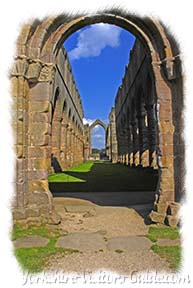
Yorkshire History – Latest News from the Battle of Towton!
The Battle of Towton was to prove a crucial turning point in the “Cousins War” as the Wars of the Roses were known in the 15th century. The war had been rumbling on for decades as the two rival families, the Lancastrians and the Yorkists, fought for supremacy and the throne of England.
Return from Yorkshire History to Yorkshire Visitors Guide Home Page

